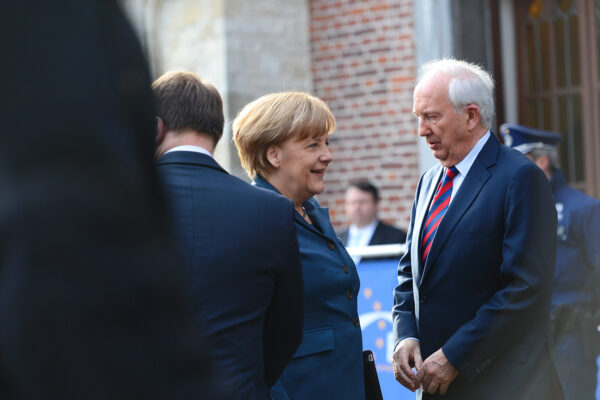
Brexit hasn’t killed off the idea of a two-speed Europe. Patrick Wintour reports for The Guardian that the big three in Western Europe — France, Germany, Italy — are keen to push ahead with closer integration on finance, tax and security, which would leave a peripheral group to continue in a looser federation.
The German chancellor, Angela Merkel, has allied herself to the cause, saying, “We certainly learned from the history of the last years that there will be as well a European Union with different speeds, that not all will participate every time in all steps of integration.”
That worries countries outside the EU core.
Peripheral worries
Sweden previously cautioned that closer integration in the eurozone could not relegate non-euro states to “second-class members” of the EU.
The head of Poland’s ruling conservative party, Jarosław Kaczyński, mused earlier this month that moves toward a two-speed Europe could lead to a “breakdown” of the entire project.
Yet it’s because countries like Sweden have resisted a European banking union and countries like Poland have refused to help shelter the millions of refugees who streamed into Europe in 2015 that the founding members are seriously looking at integration at different speeds.
Not two, but many
Andrew A. Michta, a political scientist, and Alexander Stubb, Finland’s finance minister, recognize that a two-speed Europe is seen as an alternative to either closer integration of all 27 (without Britain) or a loose confederation (that could, perhaps, still involve the British) — neither of which is a viable option for the European mainstream.
Michta writes in The American Interest that the countries that use the euro must integrate further in order to save the common currency, but that deepening the integration of a German-led core would inevitably make the outlying areas of the EU peripheral.
“To assume that such a new European Union, running at two distinct speeds, could still be run from the center is at best a dubious bet,” he argues.
Stubb agrees, writing in the Financial Times that a core Europe outside the institutional framework of the EU could lead to disintegration.
The better option is enhancing cooperation within the existing structures, which allow for integration at not just two but many speeds.
“This is not radically new,” writes Stubb.
The process of European integration has always had elements of differentiation. There are hundreds of examples of transition periods and permanent opt-outs scattered around primary and secondary legislation. The euro and the Schengen agreement are prime examples.
I have made the same argument. Instead of trying to squeeze everybody into preformulated models of cooperation, why not allow national governments to take the initiative and opt in and out of integration schemes as they see fit?
It may not be the dream of European unity, but it’s surely better than European disunity — and the likes of Poland and Sweden would not feel left out.
Conditions
To prevent a freewheeling European Union from disintegrating over time, Stubb argues that two conditions must be met: that the cooperation is open to all and that it does not damage the essential functions of the single market.
This would bar the British from (re)joining. Their insistence on regaining total control over who comes in and travels out of their country undercuts the free movement of labor, which is one of the EU’s four cardinal freedoms.
The point of a multispeed Europe is to accommodate different national interests and policy preferences, but it must not erode the very foundation of the EU.
